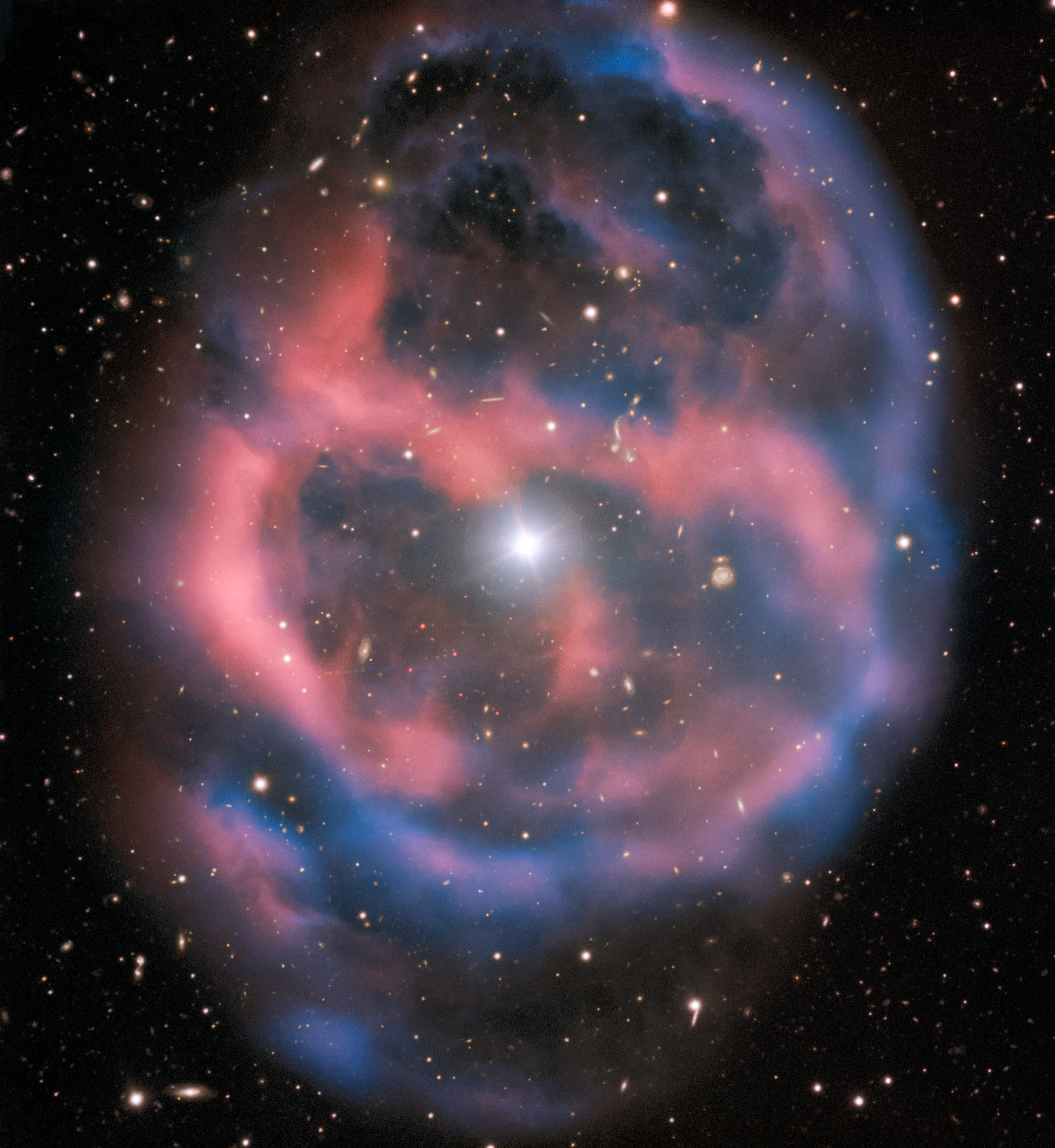Create a free profile to get unlimited access to exclusive videos, sweepstakes, and more!
Gorgeousness in death

If you’re a star, how you die depends on how big a star you are.
Huge, massive stars explode, creating so much light and heat they can outshine an entire galaxy for weeks. Dinky, lightweight stars just kinda keep on keepin’ on, going through their fuel at a miserly pace, finally fading after hundreds of billions or even trillions of years.
In-between stars, ones more like the Sun, split the difference. They don’t explode, neither do they just fade away. But their deaths aren’t easy: Toward the ends of their lives they go through a series of huge paroxysms, coughing up great winds of gas in an episodic series. After a few of these they’ve blown off so much of their outer layers that a large fraction of their mass is ejected, revealing the far hotter core.
This core is roughly the size of the Earth, but can contain half the mass of the original star. Mind-crushingly dense and infernally hot, we call these beasts white dwarfs. They blast out ultraviolet light, which energizes the gas expanding away, lighting it up quite literally like a neon sign… and creating some of the Universe’s most beautiful objects: planetary nebulae.
That is the planetary nebula Abell 36, the last gasps of a star that was once much like the Sun. Now it’s a white dwarf, seen at the nebula’s center. Its temperature is many tens of thousands of degrees, but it’s so small it’s intrinsically not terribly luminous; at the nebula’s distance of about 1,400 light years you need a large telescope to see that star at all.
Still, this distance makes Abell 36 one of the closest planetary nebulae in the sky. The image above shows a lot of detail because of that. You can see faint wisps as well as large bridges of gas stretching across the nebula. In this image, taken using the Very Large Telescope in Chile, the colors tell you what kind of gas is in the nebula: Red is hydrogen, and blue oxygen, both glowing due to the light from the white dwarf. They don’t reflect that light as, say, clouds or trees do. Instead, that light makes the electrons in those atoms jump up in energy. After some time, the electrons drop back down and re-emit that energy at specific colors, the tell-tale signature of the specific elements. Astronomers can measure these colors and intensities to determine quite a bit about the nebula, such as the ratio of elements, the temperature and density of the gas, and more.
Speaking of density, you have already guessed it’s not very. Dense, that is: You can see extremely distant galaxies far in the background. We’re seeing right through this nebula. A typical planetary may have a density of gas of just a few thousand up to a few hundred thousand atoms per cubic centimeter. That may sound like a lot, but air at sea level on Earth has more like 1019 atoms per cc! Compared to that, a nebula is the equivalent of a hard vacuum.
We only see them at all because they’re big, a light year or three across, so as we look through them we see enough gas to add up. If you were inside one that light would be so spread out you might not even know it.
It makes me wonder: Did this star have planets? Were there gas giants, super-Earths, even terrestrial planets like our own? What were they like, billions of years ago? Did life once make its way across one or more of those worlds?
We’ll never know. But this nebula does tell us more about how stars die, and that’s more than just idle curiosity: The Sun will go through all this someday too. Not for, oh, seven or so billion years, but it will. Over hundreds of million of years it’ll expel more and more gas, exposing deeper layers, until its white-dwarf core is exposed to space even as its outer layers blow away at speeds of more than 100,000 kilometers per hour.
For a long time it wasn’t clear if the white dwarf the Sun leaves behind would be energetic enough to cause that gas to glow, but recent observations indicate it will. Barely.
And I wonder further… in a few billion years, maybe alien astronomers — or our very distant descendants — will train their own telescopes on our late, great Sun, and delight in the beauty of its death. Perhaps they too will take a moment to ponder what amazements and marvels existed in what used to be a healthy, normal star system, and what life might have once gazed up into the cosmos and wondered, too.



























